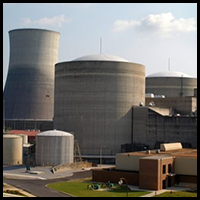Engineering Post Report
Pakistan has been pursuing policy of using nuclear technology for peaceful purposes and overcoming its lingering electricity load shedding quite successfully for years together now.
Energy is an integral part of the economic order of the country because energy demand and economic growth share a tight bond. Pakistan is in the process of overcoming its severe energy crisis that has both directly and indirectly affected all sectors of the national economy especially in terms of evolving energy-mix.
Presently, these are five nuclear power plants, located near Karachi (Sindh) and at Chashma district Mianwali (Punjab) which are producing 1430 megawatts of nuclear power and contributing to the national grid. All these five nuclear power plants had supplied about 7267 million units of electricity to the national grid during July 2019 to March 2019.
Two more units are being constructed near the oldest site of Karachi Nuclear Power Plant (KANUPP). These are Karachi Nuclear Power Plants-2 and 3 (K-2 & 3). First concrete of K-2 was poured on August 20, 2015 and that of K-3 on May 31, 2016. Work on the construction of these nuclear power plants is progressing satisfactorily according to the schedule and both K-2 and K-3 plants are likely to be completed during financial year 2021.
Karachi Coastal Power Project, Unit 2 and 3 were approved by the Executive Committee of the National Economic Council (ECNEC) in July 2013 and is being implanted at a total estimated cost of Rs 958729.120 million including foreign aid of Rs 634870.671 million.
Pakistan Atomic Energy Commission (PAEC), which is the sole department in Pakistan engaged in electricity generation using nuclear technology, is planning to intensify its activities to meet the nuclear electricity generation target of 8800 megawatt by the year 2030 set through the federal government ‘s Energy Security Plan formulated way back in 2005.
According to the information gathered from concerned official quarters, completion of both K-2 and K-3 projects will be a big step that will bring PAEC closer to achieving this target.
PAEC is also planning to develop additional sites to house more nuclear power plants in future and the sites identified throughout the country for this purpose are being investigated and acquired for development.
Technical and engineering infrastructure is already in place to support the existing under construction and future nuclear power plants in the country. This infrastructure is based on indigenous institutes imparting state of the art training and education in all relevant disciplines and at all levels from technical training to academic programmes.
KANUPP which is the oldest nuclear power plant in Pakistan has now completed 47 years of safe and successful operation. The other four units at Chesham are ranked amongst the best performing electricity generating plants in the country in terms of endurance and availability. KANUPP has generating capacity of 100 megawatts and four units at Chashma better known as C-1, C-2, C-3 and C-4 have generation capacity of 340 megawatts each.








